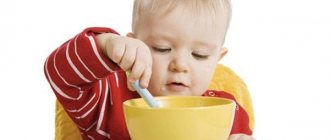School maladjustment is a very common phenomenon among modern schoolchildren. A large number of children experience serious problems with adaptation to the educational process, which manifest themselves in various ways. This has a negative impact on their academic performance, interests and relationships with teachers and peers. This disorder often manifests itself in younger schoolchildren who were unable to adapt to educational activities in time, although it is also quite common among adolescents.
School maladaptation - what is it, concept
School maladjustment is a disruption in the functioning of the child’s adaptation mechanisms to the educational process, which affects his productivity and relationships with others. It can be triggered by various factors, which most often come together:
- heredity;
- individual characteristics and neoplasms;
- relationships with family or individuals;
- problems in establishing social contacts, etc.
Schoolchildren who are at risk of school maladaptation experience difficulties in adaptation, have problems with mastering educational material and academic performance. Their relationships with peers and adults are difficult. And personal development proceeds sluggishly: these are often infantile children, they like to lie, they easily fall under the influence of others, and they are poorly aware of their “I”.
Psychogenic school maladaptation is a phenomenon that can begin to develop at any time during education. It occurs especially often during the transition from kindergarten to school, and then during the transition from primary to secondary school. Often, any personality conflicts of the child provoke the occurrence of a violation. Therefore, the problem of social and school maladaptation has long remained relevant in pedagogy and psychology.
Social maladjustment: concept, factors
The concept of social maladaptation is understood as a process in which a person violates the norms and rules of behavior in society. With social maladjustment, a person is unable to adapt to the society in which he lives. This process can manifest itself in the following:
- vagrancy
- begging
- theft
- smoking, drinking alcohol and drugs
- law violation
People who have problems with social adaptation in the future cannot get a job because they do not have labor skills and the desire to work, they also cannot create full-fledged families.
Scientists identify a number of factors that contribute to social maladjustment:
- individual
- psychological and pedagogical factors
- socio-psychological factors
- personal factors
Approaches to solving the problem
Currently, teachers together with psychologists have developed three approaches to the concept of school and social maladjustment and resolution of this problem:
- School maladjustment is defined as a mental personality disorder, which can only be overcome through psychiatric treatment.
- School maladjustment is considered as a pedagogical phenomenon, where the main factor in its occurrence is the relationship with teachers (their style of teaching and education, manner of communication). In this case, it is they who must correct the violation.
- A broader approach, which is considered as a socio-psychological process of the formation and development of conflict between the child and school requirements. In this case, the solution is an integrated approach to solving the problem.
The third option looks the most optimal and comprehensive in its logic and validity. But, despite this, experts still have disputes, because the vastness of the problem does not allow finding universal ways to solve it.
Levels of development of school maladjustment
In the process of development of school maladjustment in a child, 3 different levels can be distinguished and traced.
Pedagogical
If a student finds himself in an uncomfortable or conflict situation, he experiences a number of physiological problems, such as:
- inability to concentrate on one mental or physical operation for a long time;
- irritability from loud sounds, flashes of light, strong odors;
- restlessness;
- sudden mood swings;
- fast fatiguability;
- difficulty waking up and falling asleep, etc.
All of these problems are not permanent; they are only caused by a conflict situation. When solved, they disappear and are easily corrected.
Psychological
If at the previous level the child systematically does not receive support and does not cope with the difficulties that arise, then the psyche begins to defend itself with the help of antisocial actions. The student refuses to go to the board, talks rudely to others, does not want to go to school, refuses to complete assignments and requirements. Teachers and parents often make the situation worse when they react to such behavior with shouts, ultimatums, and bad grades.
This leads to the fact that all the problems mentioned above become permanent and become even more pronounced. Poor sleep can develop into insomnia, refusal of lunch or dinner turns into serious eating disorders, etc. The child now makes attempts to protect himself and isolate himself from everyone outside of school.
This condition should be corrected with the help of a psychologist. If this does not happen in time, then the student turns into a “difficult child with antisocial behavior.”
Physiological
The next level of school maladjustment, which occurs if the child is still left alone with problems. Everyone around him now experiences negativity from him: a conflict with one of the teachers develops into conflicts with all teachers. Not only his own parents do not understand the student, but also all adults. The skill of self-control is lost, the child no longer even tries to restrain himself.
Antisocial behavior leaves its mark on the student’s health. He suffers from chronic neuroses, and this has a negative impact on all systems in the body, making them even more difficult to cure.
There are no clear intervals for each level; forms of school maladjustment are individual for each child. Therefore, the sooner he gets help, the easier it will be to cope with the disorder and not get health complications.
Types of school maladjustment
The process of development of school maladaptation is individual for each child, so its type in its pure form is almost impossible to determine. Almost always, varieties can be combined and create a whole complex of deviations. The most common types are:
- Social. Includes denial of socially accepted attitudes, antisocial behavior, and student self-regulation problems.
- Psychosocial. Characterized by psychological characteristics of the individual (including gender and age). The less attention and individual approach is given to the child, the more clearly this type of maladjustment manifests itself.
- Pathogenic. It manifests itself through disturbances in the functioning of the brain, mental disorders, and sometimes phobias that the student has.
- Intelligent. It often manifests itself not in elementary school, but in older children. Caused by missed and unrecovered knowledge gaps that impact learning.
- Emotional. It is identified through an increased level of anxiety, a feeling of fear for academic performance. This type occurs in children with high motivation but low self-esteem.
Causes of school maladjustment
The opinions of psychologists about the possible causes of school maladjustment vary. Some believe that the only problem of school maladaptation is didactogenic disorders: the contradiction between the requirements of the educational environment and the individual psychophysical characteristics of the child. Others are inclined to believe that there are a number of prerequisites for school maladaptation that lead to the occurrence of this phenomenon.
The reasons for school maladaptation of younger schoolchildren include:
- insufficient preparedness for school: lack of basic understanding of the world, the level of development of psychomotor skills is below average, which makes it difficult for a student to keep up with classmates;
- low level of development of cognitive processes and some mental functions (too low or, conversely, too high self-esteem, distracted attention, poor memory);
- behavioral problems: the student cannot sit through an entire lesson without getting distracted or getting up;
- parental influence: overprotection, fear of mistakes and failures, insufficient attention to the child, unfavorable conditions and atmosphere in the family;
- influence from the teacher: authoritarianism, excessive demands, lack of an individual approach to each child or division into favorites and others;
- social aspect: relationships with peers do not work out, they are not recognized in the class;
- any psychological disorders and disorders (including hereditary ones);
- inability to adapt to the curriculum (high pace, complexity, specific features).
Correction
A popular mistake in working to correct maladjustment is fighting the symptoms that have appeared. For example, a child asserts himself through fights. It is useless to punish him for fighting and prohibit him from doing so. Even if he stops fighting, he will do something else, for example, vandalism, since the need for self-affirmation will remain, and the child still does not know the correct methods. Accordingly, the goal of the work is to help the child assert himself in a socially acceptable way.
So what can you do:
- Identify the child’s abilities and interests.
- Identify problems that accompany the need for self-affirmation, for example, uncertainty or fears.
- Help the child overcome problems and do useful and interesting things, for example, join a club, take up drawing or sports, play KVN, and so on.
Using the same principle, you need to work with a child’s aggression and rudeness. Perhaps this is an overcompensation for self-doubt and inability to communicate. Accordingly, we teach how to communicate and be confident - rudeness goes away on its own.
Correction of maladjustment requires an individual approach, which takes into account:
- age characteristics;
- individual personal characteristics;
- manifestations and root causes of maladjustment;
- development environment conditions.
There is no need to be afraid of maladaptation, much less to hush up the problem. Problems in adaptation occur in 15-40% of schoolchildren. Unfortunately, this is a popular problem, but in the early stages it can be easily corrected.
The work should be carried out jointly by parents and school specialists:
- the psychologist draws up recommendations and an individual development plan for the child;
- parents monitor compliance with recommendations within the home (assistance in mastering knowledge, control over the completion of lessons, analysis of missed or incomprehensible material);
- The teacher helps the child in the classroom: creates situations of success, monitors the healthy psychological climate and adherence to an individual-personal approach.
An important role in correcting a child’s maladaptation is played by the individual personal qualities of adults (parents and teachers) and the nature of their interaction. It is important to remember the overall goal - to help the child adapt. The unity of parents and teachers helps to at least reduce the level of anxiety in the child.
Junior schoolchildren
Primary school students are just beginning to move from gaming to educational activities, so games are an excellent form of assistance in adaptation:
- If we are talking about problems in relationships with the team, then games for unity.
- For the development of cognitive processes - intellectual games.
Unity games:
- Orchestra. The game is played by analogy with real conducting: the presenter (conductor) raises and lowers his hands. The higher he raises them, the louder the other children (orchestra) perform the chosen action.
- “Let the one who...” The leader goes to the center of the circle and says, “Let the one who likes to play football (for example) come out to me.” You can name any word: an item of clothing, a hobby, external features.
Educational games should be selected depending on the area in which the gap is noted. Here are some examples:
- For the development of short-term memory. The child is asked to look for 20 seconds at a sheet with drawn figures, remember them and then repeat them on a blank sheet of paper.
- Associations. The child is asked to connect pictures and words according to their meaning, and then give reasons for their decision.
- The “Complete the picture” technique will allow you to determine your creative potential. The child is offered a set of identical (simple level) or different (difficult level) blank figures and is required to complete them. There are no other restrictions. Not only the result of the work is assessed, but also activity, variability, speed of thoughts and actions.
Teenagers
The best method for correcting maladaptation in a teenager is to help him achieve self-realization. To do this, you need to have conversations, organize joint and interesting activities for the teenager, respect his personality and sense of adulthood.
Creativity therapy has proven itself positively. The type of occupation is selected individually. For example, if the problem is not only socio-psychological (uncertainty), but also in the cognitive sphere, then activities that require concentration and develop fine motor skills (sewing, embroidery, weaving) are suitable.
In order to unite the class, it is necessary to use trainings and group consultations. Work should be aimed at developing empathy, reflection, independence (including self-organization).
For example, you can follow this training plan:
- Warm-up and introduction (half an hour). Children get to know each other by playing “Hot Ball”: they throw a ball to each other, say their name and give a compliment to the other person (to whom they throw). Then the leader assesses the readiness of the entire group, the activity of individual participants, and the characteristics of the group’s composition. The game “Arrow” will help with this: the group needs to imagine that they are an arrow (scale), and move towards the maximum or minimum as much as they are ready to work, cheerful, healthy, and so on. Well, in conclusion, the presenter names the topic of the training, voices the problem and describes the essence and goals of the lesson.
- Main part. Depending on the specific conditions, relaxation with the release of the subconscious and imagination, situational role-playing games, simulation games, psychological studies, psychodrama, discussions, metaphors, drawing, and so on are used.
- Reflection. The results of the training are summed up, plans are made for the next lesson (7-8 lessons in total), the thoughts and feelings of the participants are discussed.
Conducting the training is permissible only by a specialist! This method has its own technology and a number of nuances.
General recommendations
Regardless of the child’s age, it is the responsibility of parents, psychologists and teachers to:
- Cooperate with the child, pay more attention, play, advise, observe.
- Preparing a child for school: working on the development of all types of thinking, developing fine motor skills, working on voluntary attention.
- Avoid high expectations and demands, allow the child to be imperfect and make mistakes. Sincerely notice successes without ridicule.
- Do not compare your child with other students, especially more successful ones. A child's success can only be assessed in relation to his previous successes.
- Help the child find a reference group and activities for self-realization. Additional education that matches the interests and capabilities of the child will give self-confidence due to the attention, success, and emotional support that the child will receive in this area. Gradually, self-confidence will spread to all areas of life.
- Make important the area in which the child has better success. Gradually, the attitude “If I am so good here, then I can succeed in another matter” will form.
It must be remembered that any word from an adult has educational power and corrects the behavior and thinking of the student. Both praise and scolding, shouting are tools of reinforcement and provocation to one or another response behavior.
Types of manifestation of school maladjustment
There are 5 types of manifestation of school maladaptation, which differ in the reasons that caused the violation.
Cognitive
This type of maladaptation is expressed in the student’s failure to perform according to the school curriculum, which corresponds to age characteristics. It can be either chronic in all subjects or fragmentary (from time to time). It is difficult for a child to keep up with the pace of the whole class: he is late for lessons, gets tired quickly and takes a long time to complete assignments.
Emotional-evaluative
This type of maladjustment is associated with an emotional and personal attitude towards the entire learning process or to individual subjects. The student violently expresses his emotions, which are caused by a feeling of fear and anxiety in relation to lessons, teachers, and school locations.
Behavioral
The behavioral type of maladaptation is characterized by the child’s inability to control his own behavior and weak self-regulation. He violates social norms of behavior at school: he is aggressive, enters into conflicts with others, and does not want to make any contact. There is no motivation to study and engage in other activities.
Somatic
Another type of school maladjustment, which is associated with various deviations and problems with the physical development and health of the student. Fatigue, diseases of internal organs and weak immunity negatively affect a child’s academic performance and communication.
Communicative
This type of maladjustment occurs due to difficulties in communicating and establishing contacts with peers and teachers. A student may be shy, not be able to carry on a conversation, or not know how to ask for help. All this ends in failures, which make him withdraw into himself even more.
Prevention of maladaptive states in children and adolescents in secondary schools
The article examines the relevance of the problem of school maladjustment in children and adolescents, and analyzes the nature of the occurrence and characteristic manifestations of maladjustment in childhood and adolescence. The main directions of pedagogical work on the prevention of maladaptive states in secondary school students are proposed.
Key words: school maladjustment, social adaptation, prevention of maladjustment.
The reform of political and socio-economic life in Kazakhstan, which began in the early 90s, led not only to progressive structural changes in the country, but also to the aggravation of various social problems caused by the acceleration of the rhythm of life in modern society. One of these social problems includes problems associated with the emergence of behavioral deviations in today's children and adolescents and the presence of negative mental states, which are based on maladaptive processes. School maladjustment, being part of social maladjustment, is currently a fairly common phenomenon among children and adolescents in our society, which can negatively affect their development as a whole, since social adaptation is an integral indicator of a person’s condition, reflecting his ability to perform certain biosocial tasks. functions. Such functions include a person’s adequate perception of the surrounding reality and himself, an adequate system of relationships with people around him, the ability to do socially useful work, learning, to organize his own leisure and recreation, variability of behavior in accordance with the role expectations of other people [1].
The term “maladaptation” is interpreted as a socio-psychological and socio-pedagogical phenomenon of a child’s failure in learning, associated with a subjectively insoluble conflict for him between the requirements of the educational environment and immediate environment and his psychophysical capabilities and abilities. A child’s failure in educational activities and problems in relationships with personally significant people have a negative impact on the socio-psychological well-being of his entire personal development [2].
When organizing preventive work for maladaptive states in children and adolescents in an educational institution, it should be taken into account that the main factors in the occurrence of maladaptive states include: learning difficulties, family dysfunctions, neuropsychiatric diseases, behavioral deviations, and the imbalance of the modern educational environment. In this regard, the issue of not only studying the nature of the occurrence and characteristic manifestations of social maladjustment, but also determining effective ways and means of its prevention in children's and adolescents' environment of educational institutions becomes particularly relevant. The main idea of prevention is to eliminate social preconditions that contribute to the formation of maladaptive states and take timely measures to preserve the mental health of schoolchildren through the implementation of special psychological and pedagogical work.
The educational process should include psychological and pedagogical support aimed at preventing maladaptive states of students: overwork, physical inactivity, distress, etc.
Adaptation is the process of students actively mastering new learning conditions in order to adapt them to their individual needs and capabilities. The state of social maladaptation is characterized by problems in the social and personal development of the child, which negatively affect the nature of interpersonal relationships with family, teachers and peers. At the same time, social maladjustment develops step by step in two spheres - the activity sphere and the sphere of relationships [3].
Thus, under unfavorable social and psychological-pedagogical conditions, the formation of maladjustment in children and adolescents in educational activities includes five interrelated stages: primary difficulties in learning; knowledge gaps; delay in mastering the program in one or more subjects; partial or total academic failure; refusal of educational activities, i.e. failure to attend training sessions.
Maladjustment in children and adolescents also manifests itself in difficulties caused by the need to assimilate various social roles, curricula, norms and requirements of social institutions such as family and school.
A systematic lack of success in educational activities and increasing tension in relationships with loved ones negatively affect the psychological well-being of the child as a whole. In situations of constant failures in educational activities, it ceases to be significant for the child, so he begins to look for the type of activity in which he would be more successful and could reveal his personal potential (leisure activities, sports, informal teenage groups, etc.). d.) [4].
In the structure of maladjustment, the following main components can be distinguished: cognitive, emotional-personal, behavioral (Table 1).
Table 1
The structure of childhood and adolescent maladjustment
| Components of maladjustment | Content characteristics |
| Cognitive | difficulties in educational activities, unformed or low level of cognitive processes, low performance in certain academic subjects |
| Emotional-personal | negative subjective attitude towards individual subjects and teaching in general, teachers |
| Behavioral | violation of academic discipline, behavior in the sphere of interaction with teachers and peers |
The main reasons for the formation of maladaptive states in children and adolescents include:
psychophysiological and cognitive factors: individual temperamental properties, increased anxiety, low level of voluntariness, attention, thinking, memory and behavior, psychological and functional unpreparedness for the conditions and requirements of the educational process, mental and physical health disorders.
social: a change in the child’s role position, the child’s assimilation of a system of new school requirements, a variety of educational requirements, an increase in the level of complexity of the training program, an increase in intellectual and psycho-emotional load, a change in the parental position in relation to the child, violation of the regime, etc. [5].
In psychological and pedagogical work to prevent maladaptive states in children and adolescents, two main strategic goals must be realized:
1) facilitating the adaptation of all children, without exception, to school;
2) prevention of maladaptive states in students.
Work on the prevention of maladjustment in children and adolescents should be of a purely individual nature, based on a comprehensive analysis of the causes of maladaptation of a particular student, which may be associated with the characteristics of both the psyche of the student himself and the conditions of the surrounding socio-educational environment [6].
There is a certain algorithm for preventing student maladaptation, which includes the following main stages (Figure 1) [7]:
Rice. 1. Algorithm for preventing student maladjustment
When carrying out diagnostic work, the time frame should be taken into account, since with children of primary school age, diagnostics cannot be carried out for more than 30–40 minutes; with adolescents, diagnostics can be carried out in 2 stages, each lasting no more than one hour. Psychological diagnostics of the characteristics of the behavioral and personal profile of students allows us to identify such characteristic aspects as: the level of adaptation of the student to the conditions of the school; range of current problems in the educational activities of schoolchildren; the student's attitude towards himself; emotional and behavioral problems of the child; features of the student’s interpersonal relationships with peers, i.e., determination of his social status.
The obtained indicators make it possible to determine the most effective ways of correctional work within the framework of the educational process, to specify the tasks of preventing the formation of maladaptive states (overwork, physical inactivity, distress) in children and adolescents, as well as to identify a “risk group” for in-depth diagnostic and enhanced pedagogical correction -developmental work, the directions of which are presented below (Table 2).
It should be taken into account that, along with the described manifestations of school maladjustment, there are also its hidden forms, when, with sufficiently good academic performance and discipline, the child experiences constant internal anxiety and fear of school or a specific teacher, he has no desire to go to school, there are difficulties in communication, inadequate (usually low) self-esteem. In this case, it is necessary to develop a slightly different correctional and pedagogical program to eliminate such maladaptive states, based on an analysis of the individual reasons for their occurrence.
table 2
Direction of pedagogical work with children with signs of school maladjustment
| Variants of manifestation of maladjustment | Recommendations for teachers |
| They cannot independently convey their thoughts to communication partners and formulate answers to questions asked of them, as well as independently formulate questions to their interlocutor. During disputes that arise, they behave incorrectly. They are not able to defend their own position with reason and change it, because they do not realize the need for this. When interacting with the class, they do not obey the general decision of the group. They cannot build a communication process taking into account the status of the interlocutor and the characteristics of a particular communication situation. | It is necessary to teach adequate methods of participation in a discussion, to develop in children the ability to competently and correctly justify their position in a dispute, to see the common goal of the group and act in accordance with it, to maintain social distance during communication with adults (parents, teachers, etc.) and peers . |
| When perceiving educational information, they cannot act independently. Information presented in writing causes particular difficulties. They experience great difficulty in identifying what is new and important when analyzing educational information. The pace of intellectual activity and its effectiveness are noticeably reduced. Mastering the school educational program is significantly difficult. | A step-by-step (dosed) presentation of educational information with constant step-by-step monitoring of its assimilation is necessary. When processing information intellectually, additional teaching, organizing and stimulating assistance from a teacher is necessary. It is necessary to develop the level of logical thinking. |
| It is difficult to understand the educational task as the goal of the activity. They start work without a clear plan of action. No clarifying questions are asked, although additional clarification is needed. They act not systematically, but impulsively and chaotically. If the work algorithm is proposed by the teacher, during the work they grossly violate it without noticing it. Having completed a task, they are often satisfied with the erroneous result, but when checking the result, they do not see any mistakes made. They are not able to seek the necessary additional help from the teacher, and even if such help is provided, they do not know how to use it. | It is necessary to teach the ability to set a goal for an activity and develop a plan to achieve it. Upon completion of the work, children should be encouraged to compare their own results with the sample, find and correct mistakes, and on this basis give a self-assessment of the work performed. Children should be shown where they can get additional help and how to use it correctly. |
Thus, the main directions of preventive and correctional-developmental work with children in the aspect of interpersonal relationships with peers include:
development of self-knowledge of children and adolescents in various social situations, determination of their position and methods of adequate behavior in them;
training in the skills of analyzing various communication situations;
training in emotional self-control skills in communication;
creating conditions for children and adolescents to turn to their own communication experience;
teaching children and adolescents the skills of effective interaction in conflict.
Only such an integrated approach ensures the necessary effectiveness of psychological and pedagogical work to prevent maladaptive states in children and adolescents and their correction.
Literature:
- Kazanskaya V. G. Teenager: social adaptation. - St. Petersburg: Peter, 2011.
- Ageeva L.G. Socio-psychological disadaptation of modern adolescents and its causes. - Ulyanovsk: 2010.
- Sharapanovskaya E. V. Socio-psychological disadaptation of children and adolescents. - M.: Sfera, 2005.
- Galushina E., Komarova O. Game for teenagers “What is the meaning of life” // School psychologist, 2005, No. 5.
- Korchuganova I.P. Professional development and support for teachers working with “at-risk” children: Methodological manual. - St. Petersburg, 2006.
- Krylova T. A., Strukova M. L. Social and pedagogical technologies in working with children and families at risk. - M.: Research Institute "School Technologies", 2010, - pp. 26–52.
- Cheprakova E. A. Development of correctional and developmental programs. — // Handbook of educational psychologist. School. — 2012, No. 4.
Diagnosis of school maladjustment
Only a teacher can diagnose school maladaptation at the initial level. To do this, you need to evaluate the lessons as a whole, note which of the children have periodic difficulties in mastering the material, the pace of work, and doing homework.
A teacher may notice the following signs of maladjustment in a child:
- rapid exhaustion in class and decreased performance (the child spins around a lot, cannot sit at his desk for a long time, yawns, plays with school supplies, cannot repeat what was just discussed in class);
- increased fatigue (appearance: bright red cheeks, blueness above the upper lip, refusal to play and communicate with classmates, lack of initiative in lessons, aggression towards peers, walking on tiptoes);
- errors in written work (done out of order, many erasures and corrections, rules for keeping notebooks not followed, homework not submitted on time, letters missing in words);
- increased anxiety with good academic performance (afraid of answering at the board, doubts one’s abilities, reacts to comments with tears or aggression, fidgets with clothes when answering, makes a lot of hand movements, often blinks or licks lips).
If at least one of the signs often begins to appear, then the teacher is obliged to talk with the parents and involve a school psychologist.
Further examination is as follows:
- The psychologist carries out the necessary diagnostic techniques.
- Collects and analyzes the received data, criteria for school maladaptation, and, if necessary, talks with the child again.
- A student is being examined by a doctor.
- The psychologist talks with the teacher, correlating all the results with observations.
- The teacher and psychologist convey all the information to parents.
Diagnostics
Several methods can be used to diagnose school maladjustment. I propose to consider an observation map for diagnosing all ages and separately methods for primary schoolchildren and adolescents.
Observation map
D. Stott's observation card is a ready-made form with statements, in which it is proposed to enter answers about the correctness of these statements regarding a particular child. A total of 16 blocks are presented, that is, all symptoms are divided into symptom complexes. This allows us to establish the features of maladjustment:
- distrust of people, things, situations;
- depression;
- withdrawal;
- anxiety in relationships with adults;
- hostility in relationships with adults;
- anxiety regarding peers and other children;
- asociality;
- hostility towards children;
- restlessness and restlessness;
- emotional stress;
- signs of neuroses;
- unfavorable development conditions;
- problems in the field of sexual development;
- mental retardation;
- diseases and pathologies;
- physical disabilities.
The points determine the fact of maladjustment, the severity of each symptom complex and its role in maladjustment. The card can be used for both primary schoolchildren and teenagers.
This is an extensive and multifunctional (quality and quantity, congenital and acquired causes, severity of individual causes) method for studying maladjustment. But the disadvantage of the technique is that a more complete observation can only be carried out by a school specialist, but even then not always, subjective errors in the assessment are possible. In addition, this is a time-consuming method to implement.
Junior schoolchildren
To diagnose younger schoolchildren, especially first-graders, the questionnaire of L. M. Kovaleva and N. N. Tarasenko is often used. The technique is also focused on observation of the child by teachers, but as in the first case, any adult who knows the child well can answer the questions.
The questionnaire includes 46 questions, which are divided into blocks (possible causes and factors of maladjustment):
- parental attitude towards the child;
- readiness (unreadiness) for school;
- left-handedness;
- neuroses and neurotic symptoms;
- infantilism;
- hyperkinetic syndrome (impaired attention, hyperactivity and impulsivity), excessive disinhibition;
- inert nervous system;
- weak voluntary mental functions;
- lack of educational motivation;
- asthenic syndrome;
- intellectual disabilities.
The maladjustment coefficient is calculated. Among the possible options: normal adaptation, average degree of maladjustment, severe maladaptation, indications for visiting a neuropsychiatrist (congenital problems).
Teenagers
When diagnosing adolescents, you can use complexes of diagnostic techniques to analyze individual areas:
- personality accentuation tests;
- Phillips anxiety test;
- method “Home. Tree. Human";
- method of unfinished sentences;
- SAN questionnaire (well-being, activity, mood);
- Thomas test (behavior in conflicts);
- Q-sort (self-esteem analysis);
- SMIL (standardized multifactorial method of personality research);
- test of value orientations;
- T. Leary “Diagnostics of Interpersonal Relationships”;
- Furman A. “How adapted are you to life.”
Observations about the maladjustment of adolescents indicate:
- Developmental delay, with the exception of mental retardation.
- Problems in mastering school knowledge and academic performance.
- Underdevelopment of speech, problems in the form of insufficient vocabulary, difficulty in generalizing, systematizing and other functions of speech. Weakness of inner speech.
- Lack of cognitive activity, curiosity and verbal-semantic memory.
- Aggression towards people, things, animals.
- Feelings of inferiority.
- Excitability and conflict.
- Inadequate self-esteem.
- Running away from home and/or school.
- Deviant behavior.
Both among younger schoolchildren and among teenagers, the composition method can be used to determine their true motives, needs and interests (for younger children - a fairy tale, for older children - a story).
Correction of maladjustment in school-age children
There is no unified method for correcting school maladaptation in school-age children. An individual approach must be taken to each child, because... The factors of school maladaptation and the ways of its correction vary greatly. The child needs qualified help that will simultaneously consider medical, psychological, pedagogical and social aspects.
The main emphasis is on psychological assistance, so a large part of the work is performed by the school psychologist (if necessary, this can be a private psychologist or psychotherapist). He explores in detail the main points associated with the life of a student:
- studies the child’s social environment and the conditions of his development;
- assesses the psychophysical development of the student, takes into account individual characteristics;
- determines the nature of the internal conflict that led to the violation;
- identifies factors that lead to a crisis situation and the appearance of signs of maladjustment;
- draws up an individual plan for psychological and pedagogical correction and brings it to the attention of teachers and parents.
A psychologist practices many methods of correction, most often these can be:
- conversations;
- art therapy;
- group training;
- associative techniques;
- gaming activities aimed at uniting the class team;
- exercises to develop mental processes when necessary.
Teachers are also actively involved in corrective measures for a particular child. They create positive conditions for the student’s adaptation: a comfortable and friendly atmosphere in the classroom, a friendly climate in the classroom, and special attention to the child.
Parents should be involved in the child's life to increase the chance of positive dynamics in the development of the disorder. Without their support, the result may be minimal. The family must build a trusting relationship with the child, encourage and help him in all endeavors, and be sure to praise him. All comments should be kept to a minimum or spoken calmly and accurately. Family members should spend time together and engage in some common activity.
School maladjustment in adolescence
During adolescence, the situation most often worsens. Students' performance begins to decline and more problems with discipline appear. During this period, a number of factors begin to affect the process of normal adaptation that lead to its disruption
The first factor is the individual factor. It should be noted that during this period, adolescents experience a strong hormonal surge, which affects their attitude, behavior, physical and emotional state. Some strive to take a leading position, they realize this desire through antisocial behavior, try to demonstrate their maturity through incorrect behavior, start smoking or drinking alcohol, and using obscene language.
The next factor is the mental factor. During this period, emotions take precedence over rationality. The child decides to do for himself what brings him more pleasure and thinks less about the benefits.
The next factor is the volitional factor. A teenager begins to have problems with water power. He often cannot bring himself to do what he needs to do; more often he does what he wants. If the goal is not attractive to him, then most often the work remains unfinished.
The last factor is the family factor. During adolescence, children try to appear independent. If there are good relationships in the family, then the child does not move away from relatives and seeks help and support when necessary. If family relationships have become complicated, then the teenager has no one to share his problem with.
Prevention of school maladjustment
Methods for preventing school maladjustment should also be a set of measures. Today it consists of the following measures:
- compensating classes;
- special methods of correctional training;
- social trainings;
- trainings together with parents and students;
- special consultations for parents.
The main focus of prevention should be on successful adaptation to the school environment. After all, for every schoolchild this is a big stressful process. Both parents and teachers must work together to help the child pass it. The result should be his positive attitude towards life, towards the educational process, towards teachers and classmates. Then the lessons will be positive, with a creative approach, learning activities will bring joy and satisfaction, and school will no longer be a problem.
The process of adaptation to school will be much easier if a trusting and friendly relationship is established between the child and parents. In this case, any life difficulties will be overcome more successfully, and forms of school maladjustment will not appear.







